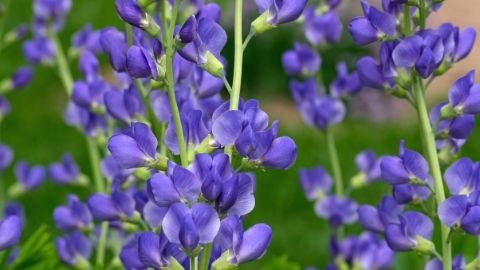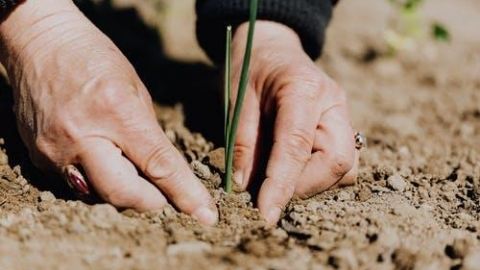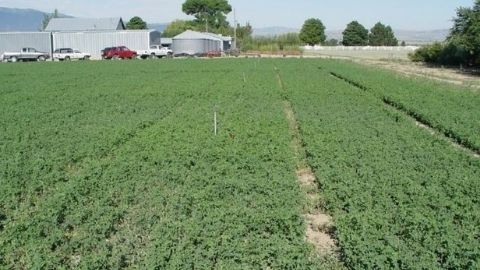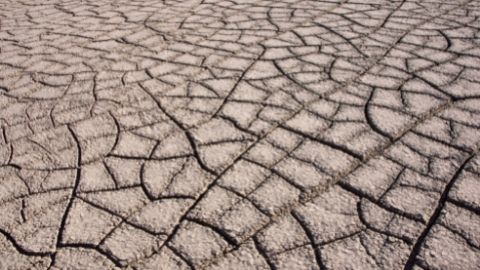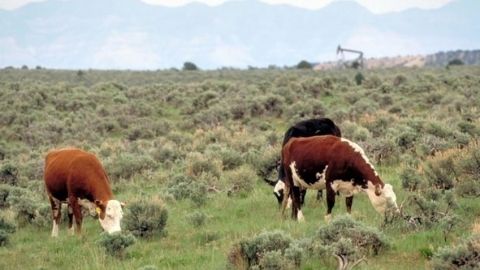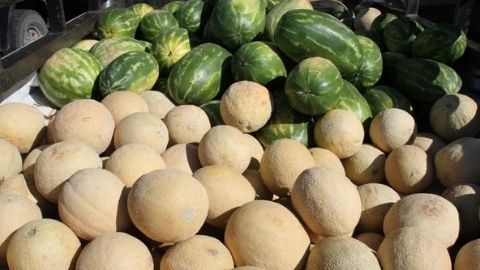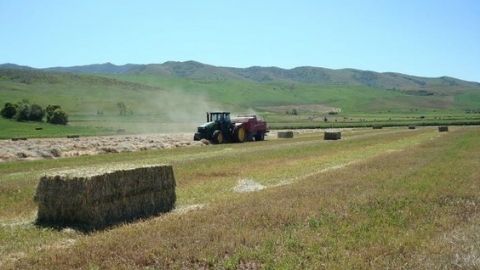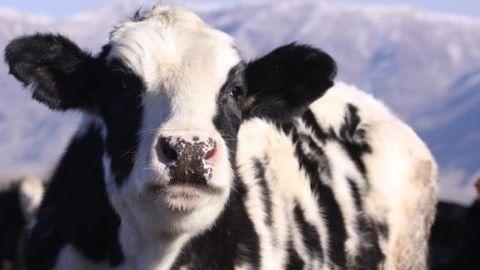Utah Hay and Forage Grower: Preferred Drought Management Strategies
Introduction
Utah is the third driest state in the United States, with 65% of the state experiencing abnormally dry conditions from 2000 to 2019 (NIDIS, 2020). In 2018 and 2019, 38% of the state experienced severe drought (NIDIS, 2020). Agricultural production is critical to the Utah economy, contributing just over 2% of gross domestic product (GDP) annually (BEA, 2019). Hay and forage production plays a vital role in Utah’s economy as hay sales generated $267 million in 2019 (UDAF, 2020), not including the value of hay grown and used within the same operation. However, agricultural production puts great demands on water resources as it consumes 80% of all water in the United States (USDA ERS, 2019). Hence, agricultural adaption to drought will be critical to maintaining food and feed production and supporting the Utah economy and its rural communities, as rural areas are often severely impacted by persistent drought (Lal et al., 2012; Howitt et al., 2017).
A study by Drugova, Curtis, and Ward (2021) examined agricultural producer preferences for drought management strategies and how their preferences shift in response to varying drought levels and crop losses. Study data were collected through choice experiments1 conducted in Utah at producer meetings and online in 2019 for fresh produce growers, hay and forage growers, and livestock producers.
This fact sheet, the third in a series of three, examines the preferred drought management strategies of hay and forage growers and how their preferences change depending on drought severity and expected yields. Severe drought in forage production causes crop damage and losses leading to decreases in yield and profitability for growers (Yost et al., 2019). Water shortages are also common, with restrictions on use commonly imposed, especially in the late summer months. Hence, extended drought poses a threat to agricultural productivity and the economies of rural and tribal areas in Utah.
1Choice experiments are used to evaluate the decision process and value an individual places on a good, service, or situation/policy with specific characteristics. Field choice experiments normally have from 20–80 participants with an average size of 50 (Hensher, Rose, & Green, 2005).

Grower Characteristics
Eighty-eight hay/forage growers participated in the study, but only 35 completed all necessary choice sets, and thus, were included in the final sample. Most farm 101–300 acres of land (37%), grow hay as their primary crop (46%), sell through direct sales outlets (65%), and use wheel line irrigation systems (43%). Also, 67% have previously used cover crops, and 82% have used manure applications, which are water-saving technologies (Yost et al., 2019; Wang et al., 2016). Finally, 41% considered crop losses above 60% significant, while 29% were more sensitive to crop losses, considering losses under 40% significant. Table 1 provides an overview of grower characteristics.
Table 1 - Characteristics of Study Hay/Forage Growers
| Characteristic | Category | Count | % share |
|---|---|---|---|
| Primary operator gender | Male | 32 | 91% |
| Female | 3 | 9% | |
| Primary sales outlet | Direct | 22 | 65% |
| Direct & wholesale | 11 | 32% | |
| Other | 1 | 3% | |
| Acres farmed | 0–100 | 12 | 34% |
| 101–300 | 13 | 37% | |
| 301–1000 | 5 | 14% | |
| >1000 | 5 | 14% | |
| Primary output | Hay | 16 | 46% |
| Livestock | 14 | 40% | |
| Other | 5 | 14% | |
| Primary irrigation system | Flood | 6 | 17% |
| Pivot | 14 | 40% | |
| Wheel | 15 | 43% | |
| Cover crops used previously | Yes | 22 | 67% |
| No | 11 | 33% | |
| Manure applications used previously | Yes | 28 | 82% |
| No | 6 | 18% | |
| What is a large % of crop loss to you? | 80–99% | 2 | 6% |
| 60–79% | 12 | 35% | |
| 40–59% | 10 | 29% | |
| 20–39% | 9 | 26% | |
| <20% | 1 | 3% | |
| Number of respondents | - | 35 | 100% |
Note. Sum of responses per characteristic may not add up to 35 (not all questions were completed).
Preferred Strategies
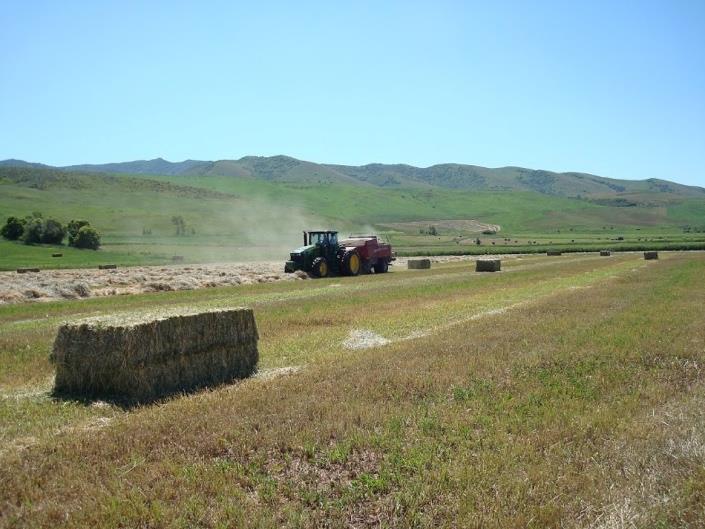 Hay/forage growers were asked to select their most preferred drought management strategy from a list of options, assuming a drought causing large crop losses but not specifying a specific yield or amount of crop loss for each strategy. The results (Table 2, panel A) show that most hay/forage growers (33%) preferred to switch to a low water-use crop/variety. Adoption of a water-saving technology was most preferred by 27% of the growers, while transitioning to a more efficient irrigation system was most preferred by 24%. The smallest share of the hay/forage growers (15%) selected moving out of farming (or fallowing) as their preferred strategy.
Hay/forage growers were asked to select their most preferred drought management strategy from a list of options, assuming a drought causing large crop losses but not specifying a specific yield or amount of crop loss for each strategy. The results (Table 2, panel A) show that most hay/forage growers (33%) preferred to switch to a low water-use crop/variety. Adoption of a water-saving technology was most preferred by 27% of the growers, while transitioning to a more efficient irrigation system was most preferred by 24%. The smallest share of the hay/forage growers (15%) selected moving out of farming (or fallowing) as their preferred strategy.
Growers were then asked whether or not they would adopt a specific drought management strategy, assuming a drought causing large crop losses but specifying the expected yield or amount of the crop harvested (40%, 60%, and 80% for each strategy) if they adopt the strategy. The three offered strategies were switching to a low water-use crop/variety, adopting a water-saving technology, and switching to a more efficient irrigation system. Grower responses were used to estimate the minimum yield growers require in order to adopt a specific strategy and determine their preferences among strategies (Table 2, panel B). Lower values represent higher willingness to adopt the strategy (and higher preference).
As shown, growers are willing to switch to a more efficient irrigation system if they can harvest at least 38.5% of their crop, making it the most preferred strategy. Growers need to harvest at least 46.7% of their crop in order to adopt a water-saving technology and 49.9% to switch to a low water-use crop/variety. The strategy rankings change depending on whether information about yields under each strategy was provided (Table 2). In summary, growers change their preferences for a drought management strategy depending on the expected yield, which in turn depends on drought severity.
Table 2 - Grower Preferences for Drought Management Strategies
| Strategy3 | A. No crop yield information provided | B. Crop yield information provided | ||
|---|---|---|---|---|
| Rank | % of respondents1 | Rank | Crop harvested2 | |
| Switch to a low water-use crop/variety. | 1 | 33% | 3 | 49.9*** |
| Adopt a water-saving technology. | 2 | 27% | 2 | 46.7*** |
| Switch to a more water efficient irrigation system. | 3 | 24% | 1 | 38.5%* |
| Move out of farming/fallow land. | 4 | 15% | - | - |
Notes. *** and * denote significance at 1% and 10% level, respectively.
1Percentages represent the share of respondents who selected the given strategy as most preferred.
2Percentages represent required minimum % yield. Lower value indicates a more preferred strategy.
3While other strategies exist, such as irrigation scheduling, including only these primary strategies kept the experiment within recommended lengths.
Grower preferences for drought management strategies also differ across grower subgroups. Table 3 reports the minimum yields (percentage) required within each grower subgroup for a given strategy. Statistically significant differences between the subgroups are highlighted in bold.
Table 3 - Preferences for Drought Management Strategies by Grower Subgroups
| Characteristic | Category | Switch to a more efficient irrigation system | Adopt a water-saving technology | Switch to a low water-use crop |
|---|---|---|---|---|
| Primary operator gender | Male | 38.2% | 48.6% | 52.4% |
| Female | 41.1% | 27.0% | 24.2% | |
| Primary sales outlet | Direct | 42.0% | 49.4% | 57.0% |
| Others | 36.3% | 44.5% | 41.1% | |
| Acres farmed | 0–100 acres | 21.4% | 53.6% | 48.5% |
| 101–300 acres | 55.7% | 35.4% | 56.2% | |
| 301–1000 acres | 24.8% | 58.4% | 54.1% | |
| > 1000 acres | 49.1% | 47.3% | 29.3% | |
| Primary output | Hay | 53.5% | 53.8% | 60.5% |
| Livestock | 27.2% | 38.5% | 48.6% | |
| Other | 22.9% | 47.2% | 18.0% | |
| Primary irrigation system | Flood | 72.0% | 46.9% | 63.6% |
| Pivot | 38.3% | 44.6% | 50.0% | |
| Wheel line | 26.7% | 48.7% | 44.6% | |
| Cover crops used previously | Yes | 30.7% | 41.1% | 47.4% |
| No | 37.6% | 54.0% | 48.4% | |
| Manure applications used previously | Yes | 46.5% | 47.6% | 55.3% |
| No | 37.8% | 37.4% | 14.1% | |
| Large % of crop loss | 0–39% | 36.3% | 40.6% | 46.9% |
| 40–59% | 31.7% | 49.3% | 45.1% | |
| 60–99% | 49.0% | 48.5% | 57.5% |
Note. Bold font indicates that the minimum required percentage yield required to adopt is significantly different between the subgroups within a characteristic.
Those who farm on 101–300 acres, primarily grow hay, use flood irrigation systems, and have used manure applications before are less willing to switch to a more efficient irrigation system than other subgroups. Adopting a water-saving technology is preferred more by those who farm on 101–300 acres and those primarily raising livestock. Switching to a low water-use crop is preferred more by women and those who use sales outlets other than direct marketing, farm on more than 1000 acres, and use wheel line irrigation systems. It’s also preferred more by those not previously using manure applications and whose primary output is other than hay and livestock.
Finally, hay/forage growers were asked under what conditions they would stop farming. The most common response indicated no water availability, followed by issues with profitability, production, or markets, and finally, multiple-year drought/extreme weather conditions.
Conclusions
Drought conditions would have to be very serious and long-term for hay/forage growers in Utah to exit farming. They are more likely to switch to a low water-use crop/variety as a drought management strategy than adopt a water-saving technology or switch to a more water-efficient irrigation system if the impact on yield is unknown. However, growers are sensitive to expected yields and associated drought severity since yield levels influenced their willingness to adopt each strategy. In addition, we find some differences in preferences for the strategies across grower subgroups.
Finally, information about expected yields under each drought management strategy and drought scenario is important to the decision-making process, and thus, growers would benefit greatly from such information. Policies to improve uptake of drought management strategies should target grower preferred options as they are more likely to be successful. As study results presented here only represent a small number of growers, future studies to inform policy are warranted.
References
- Bureau of Economic Analysis [BEA]. (2019). Annual GDP by state – real GDP in chained dollars. Retrieved February 2, 2021, from https://apps.bea.gov/iTable/iTable.cfm?reqid=70&step=1&acrdn=1
- Drugova, T., Curtis, K., & Ward, R. (2021). Producer preferences for drought management strategies in the arid West [Working paper]. Utah State University Applied Economics. https://extension.usu.edu/apec/files/ProducerPreferencesforDroughtManagementStrategiesintheAridWest.pdf
- Hensher, D. A., Rose, J. M., & Greene, W. H. (2005). Applied choice analysis: A primer. Cambridge University Press.
- Howitt, R., MacEwan, D., Medellín-Azuara, J., Lund, J., & Sumner, D. (2017). Economic analysis of the 2015 drought for California agriculture. University of California, Davis, Center for Watershed Sciences.
- Lal, R., Delgado, J.A., Gulliford, J., Nielsen, D., Rice, C.W., & Van Pelt, R.S. (2012). Adapting agriculture to drought and extreme events. Journal of Soil and Water Conservation 67(6),162A–166A.
- National Integrated Drought Information System [NIDIS]. (2020). Drought in Utah. https://www.drought.gov/drought/states/utah
- Utah Department of Agriculture and Food [UDAF]. (2020). Annual report. https://ag.utah.gov/wp-content/uploads/2020/10/Utah-2020-Final-Annual-Report-Statistical-Bulletin.pdf
- United States Department of Agriculture Economic Research Service [USDA ERS]. (2019). Irrigation & water use. https://www.ers.usda.gov/topics/farm-practices-management/irrigation-water-use/
- Wang, X., Jia, Z., Liang, L., Yang, B., Ding, R., Nie, J., & Wang, J. (2016). Impacts of manure application on soil environment, rainfall use efficiency and crop biomass under dryland farming. Scientific Reports 6(1), 1–8.
- Yost, M., Sorensen, B., Creech, E., Allen, N., Larsen, R., Ramirez, R., Ransom, C., Reid, C., Gale, J., & Kitchen, B. (2019). Defense against drought. All Current Publications, Paper 1994. Utah State University Extension. https://digitalcommons.usu.edu/extension_curall/1994/
Date Published: April 2021
Authors
Kynda Curtis, Professor and Extension Specialist, Department of Applied Economics; Tatiana Drugova, Postdoctoral Fellow, Department of Applied Economics; Ruby Ward, Professor and Extension Specialist, Department of Applied Economics
Related Research




